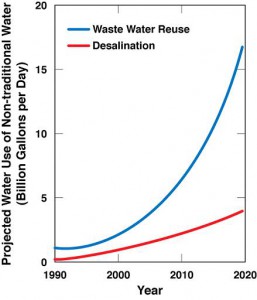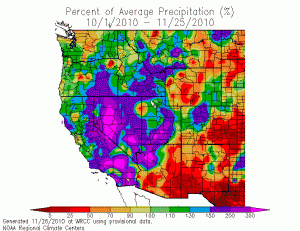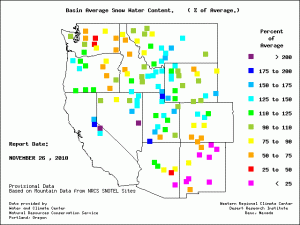As we enter a new era of U.S. fiscal austerity, in which some members of Congress push to foreswear the dreaded “earmark” (pork barrel funding), Kitty Felde points out the importance of the practice in western water development:
In Congress, seniority is power. Senate historian Donald Ritchie says small states re-elect incumbents more often than big states. That means long-serving lawmakers from smaller states end up with plum committee chairmanships — and more power to tack on earmarks.
Ritchie cites the example of Republican Carl Hayden. He was Arizona’s first congressman when the state entered the union in 1912.
Fifteen years later, Hayden moved up to the Senate where he served for more than four decades. Ritchie says Hayden was powerful enough to make sure that when they divvied up Colorado River water, bone-dry Arizona got a good drenching.
“When Hayden came to Congress,” he says, “it was a very small state that didn’t have the resources, didn’t have the water, didn’t have the roads. He made sure that the dams were built, that the roads were built, that the aqueducts were built. And now there are millions of people living in Arizona who couldn’t have lived there before the federal government put that much money, spent that much money in the state.”
For grins, I took a cruise through the Senate Fiscal Year 2011 Energy and Water Appropriations bill. Our Congress is so dysfunctional that the bill hasn’t been approved yet (despite the fact that we’re two months into the fiscal year). So none of this stuff is actually funded – it’s merely the wish list of the Senators if Congress ever were to get its shit together and actually approve a federal budget.
But it gives a flavor. There are 45 earmarks in the Bureau of Reclamation budget, including $11 million in Feinstein-Boxer earmarks for California’s Central Valley. Byron Dorgan and Kent Conrad, North Dakota’s two Democratic senators, tried to score $13 million for their state. My homeboys, Jeff Bingaman and Tom Udall, pencilled in $2 million for a big water storage project out in eastern New Mexico.
That’s a fundamental truth about water development in the Western United States, and the societal development that followed. It took federal money to make it happen. There was a whole lot of political logrolling involved. The feds paid for flood control protection in the east, too, through the Army Corps of Engineers. So we asked for our share.
But we are not self-reliant, our mythology notwithstanding.






